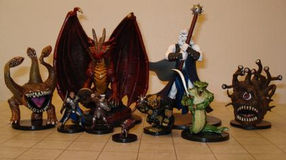Gamestorming #4: Aesthetics
- Caity Kelly
- Feb 22, 2019
- 2 min read

Image Source: https://pxhere.com/en/photo/1172759
Personally, I find making decisions on the colors, fonts, symbols and other aesthetic qualities of a work to be one of the most challenging processes. There are so many aspects to consider:
What colors should I use?
Should I include logos, pictures, or other symbols?
What should the overall "theme" be?
Should there be any differing textures in the items?
Aside from the "eye-catching" value a good aesthetic design gives to a product, these decisions can also have an effect on who is able to benefit from the product--for example, individuals who live with color-blindness. This has a profound effect on what colors can be used for fonts or for differentiating one game piece from another. Therefore, a designer must come up with a decision--Am I willing to limit my color selection in order to increase my audience? If doable, I personally think it is a good idea to take such a detail into consideration to ensure that the game is more inclusive. There are also considerations to be made about if other accommodations, such as inserting Braille textures next to all text on the cards, are an option that can be included.
Furthermore, the question of pictures and logos come into play. Will the game have its own original artwork? Or is delving into a database of images that are free for commercial use a good option? The latter limits what a designer might be able to do; however, the former option adds substantial cost onto game development.
Furthermore, it is also vital to consider if the game aesthetic design is something the designer can do personally or if it is something that should be given to a more experienced developer. Finding a developer and adding them to the design team certainly adds more cost; however, it could also help save time and improve the game quality.
For my own game, I will certainly be choosing the color scheme and creating the paper prototype. If possible, I intend to create it with a color scheme that is readable for individuals with colorblindness. I intend to use a "free-for-use" graphic for a large portion of the game in order to cut down on design time and stick to simplistic stylistic elements.
Overall, as designers, I think we can conclude that this process relates back to questions we ask all throughout design stages:
Who is my target audience?
What is the content of the game?
What am I trying to teach?
What is the theme or fantasy of the game?
What game medium am I using?
Do aesthetic choices like color or graphics serve a specific purpose?


Comments